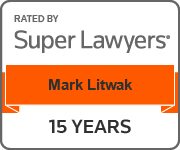This issue was recently illustrated when a Florida jury awarded Hulk Hogan $140
million in damages for invasion of his privacy after Gawker Media published a tape that was almost two minutes in length of him having sex with the wife of a friend. Hulk Hogan is a well-known professional wrestler and celebrity. Gawker Media is an online media publisher with 64 million monthly US readers.
Courts have found that a person who publicizes a matter concerning the private life of another can be liable for invasion of privacy if the matter is of a kind that would be highly offensive to a reasonable person, and is not of legitimate concern to the public. In other words, the publication is offensive and not newsworthy.
Clearly, most people would find the unauthorized publication of a private sex tape to be highly offensive. Just a few weeks ago, a jury awarded Fox Sports broadcaster Erin Andrews $55 million in damages against a voyeur and the operators of a Nashville Marriott when the hotel let a stalker book a room next door to her, which he used to surreptitiously videotape her in the nude and then uploaded the clip to the Internet.
However, the term “newsworthy” is an imprecise term of art that the courts have struggled to define. The Hulk Hogan case was a clash between Gawker’s free speech rights under the First Amendment and Hogan’s right to maintain his privacy. While Gawker often deals in salacious news and gossip, it has the same First Amendment rights as more esteemed publications like the New York Times. Hogan is a celebrity, and courts have found that celebrities by thrusting themselves into the limelight have less of a right to privacy than those who closely guard their privacy. However, some individuals who have not sought publicity or consented to it have through their own conduct, such as committing a crime, become a legitimate subject of public interest. These involuntary public figures are treated the same as those who have sought publicity. Here, Hogan publicly disclosed to radio jock Howard Stern that he slept with his friend’s wife with the blessing of her husband although he claimed that he was not aware that his activities were being filmed by security cameras in the home.
It can be difficult to define exactly what is newsworthy, which is often described as that which is of legitimate public concern. However, just because the public might be interested in scandalous details of a celebrity’s personal life, does not by itself make an item newsworthy. Courts have mentioned several factors including the value to society of the information published, the details and nature of the information disclosed, and whether the party voluntarily placed them in the public eye.
In one case, a newspaper revealed that a college student running for student body president was a transsexual. The court found that this disclosure was not newsworthy.[1] The court saw little connection between the information disclosed and the student’s fitness for this office. Likewise, a mother’s private words spoken over the body of her slain son as he lay in a hospital room were held to be not newsworthy although it was undisputed that the public has a legitimate public interest in gang violence.[2]
So, while the legitimate public interest extends beyond hard news to information provided for educational and amusement entertainment purposes, it does not include sensational prying into private lives for its own sake.” Gawker argued that the facts were not private at the time the Gawker story was posted, but had been widely disseminated before in both news reports and photographs. It bears noting that Hogan was upset not only by the sexual revelations in the tape, but because he admitted to being a racist and used some extremely offensive language. After the World Wrestling Entertainment Inc. (“WWE”) learned that the tape contained such racist remarks, they terminated their contract with him.
In the end, the jury was obviously sympathetic to Hogan. He asked for $100 million in damages, yet the jury awarded him $140 million. The award was comprised of $55 million for economic injuries, $60 million for emotional distress, and another $25 million in punitive damages.
In order to avoid liability, filmmakers should follow these guidelines:
- Be especially careful if you disclose information about private living individuals who are not public figures or public officials.
- Obtain written releases from people on-camera that might be identifiable to an audience whenever possible.
- Purchase Errors & Omissions Insurance (E & O Insurance) for your company and add yourself as a named insured.
- Avoid the use of hidden cameras and microphones.
- To the extent possible, base the information in your film on matters of public record, such as court transcripts. Revealing matters of public record cannot be the basis for an invasion of privacy action because they are already public.
- Have an experienced attorney review your completed film before it is released.
[1] Diaz v. Oakland Tribune, Inc. 139 Cal.App.3d 118, 126 (1983).
[2] Green v. Chicago Tribune Co., 296 Ill. App.3d 1, 675 NE 2nd 249 (1996).

